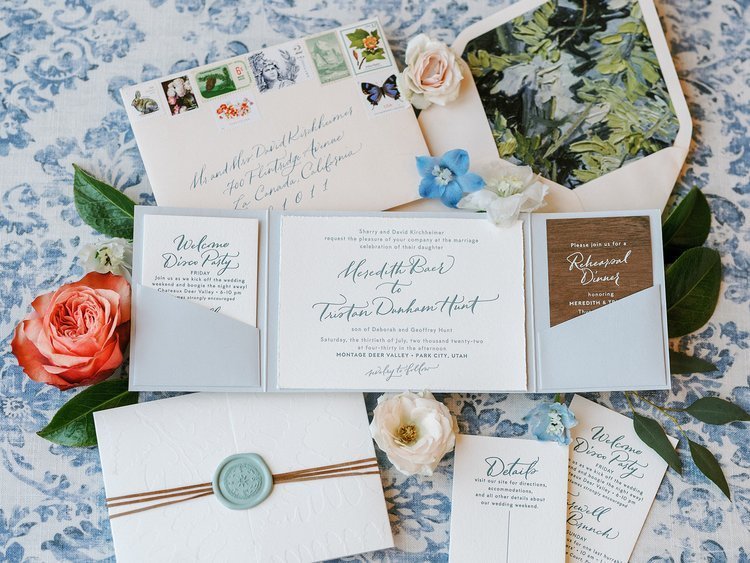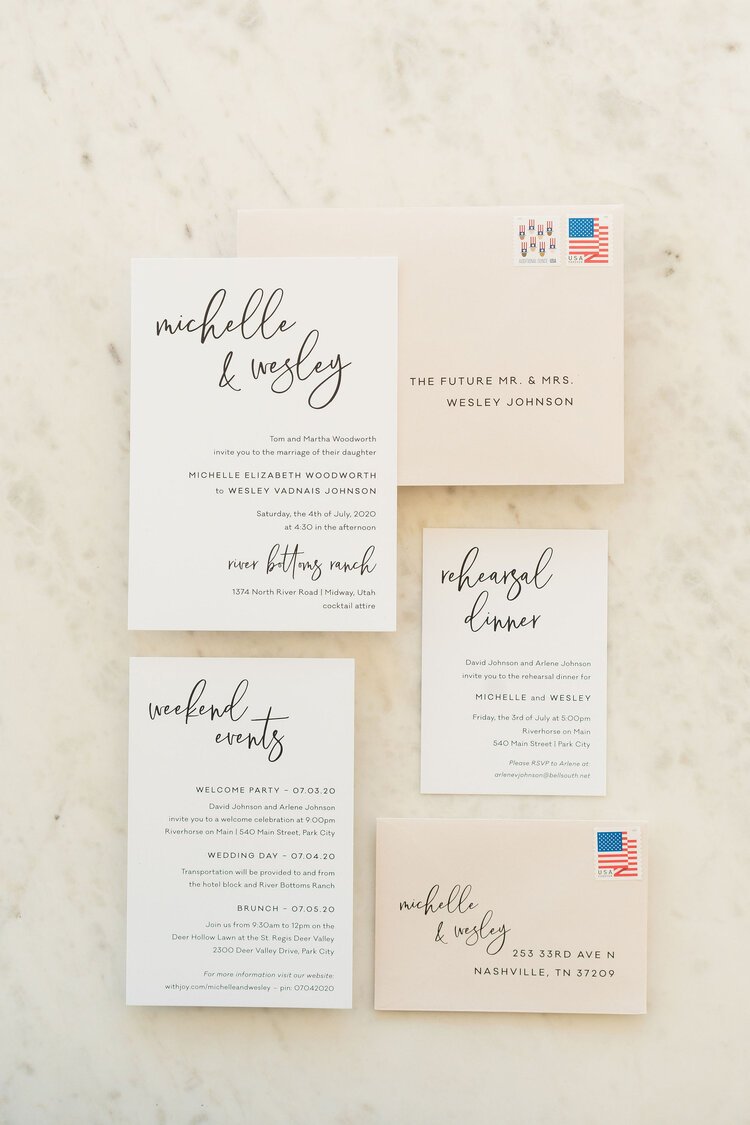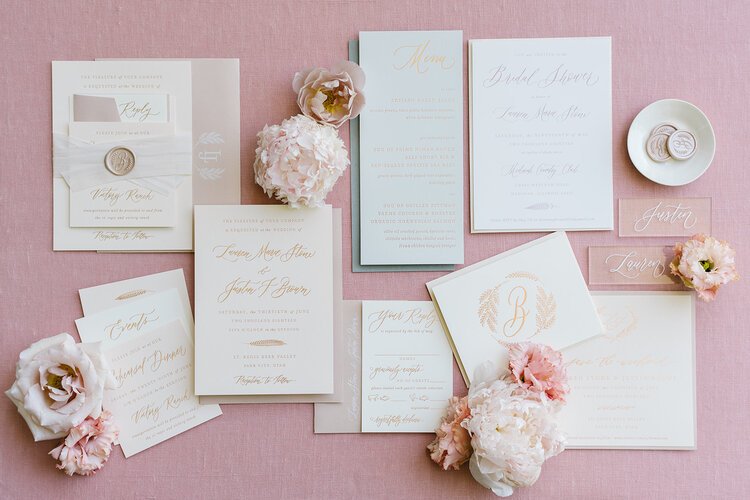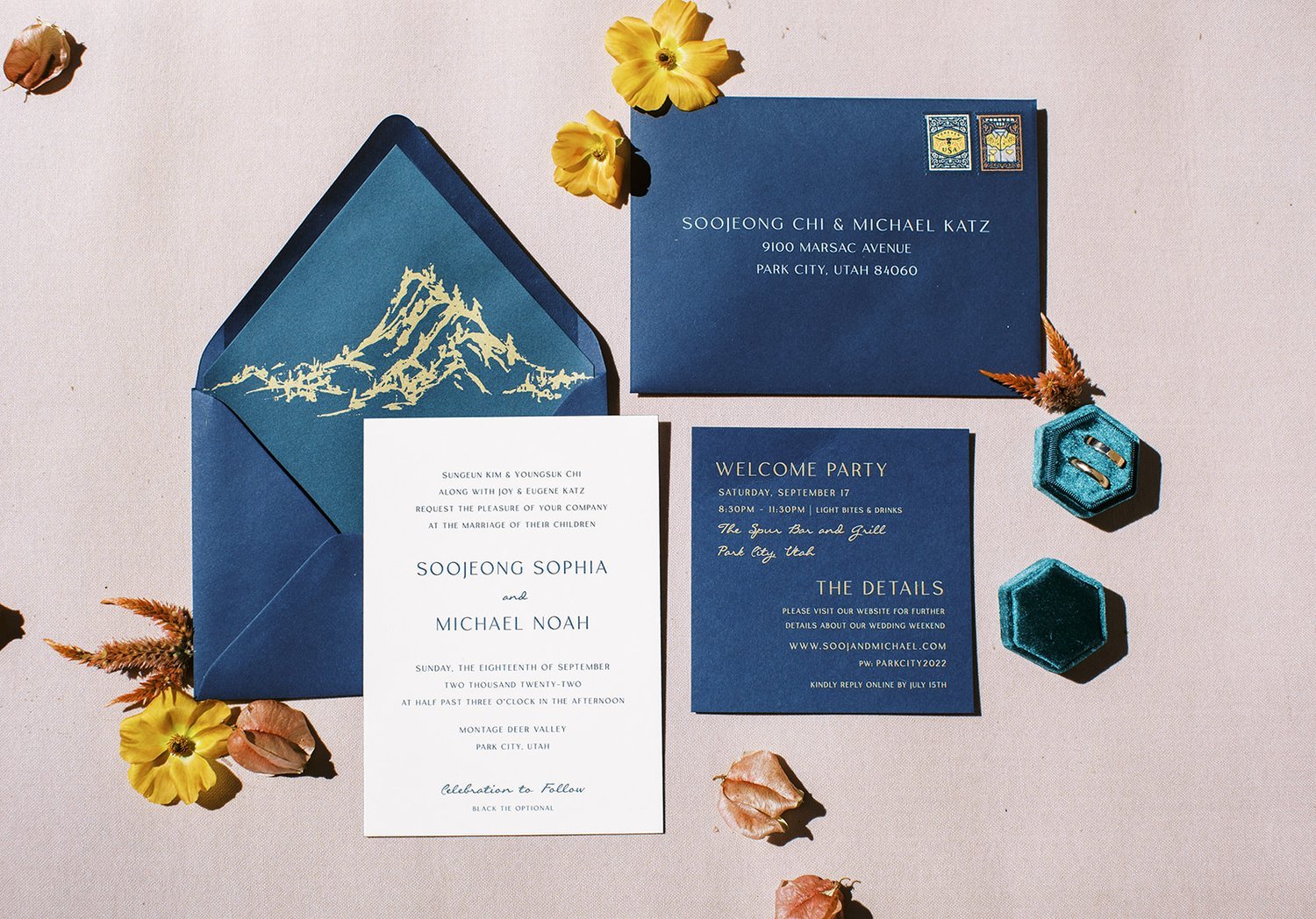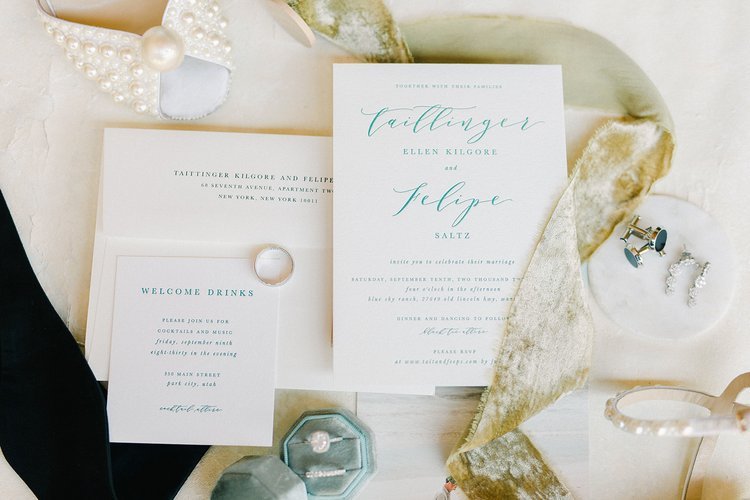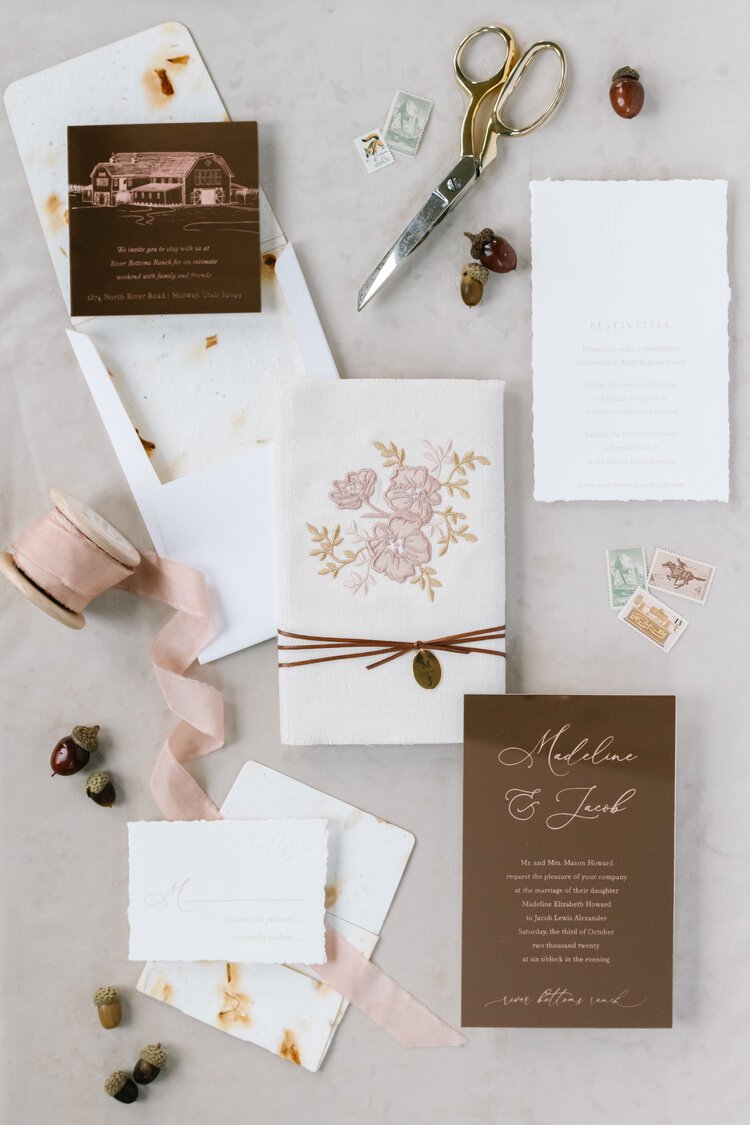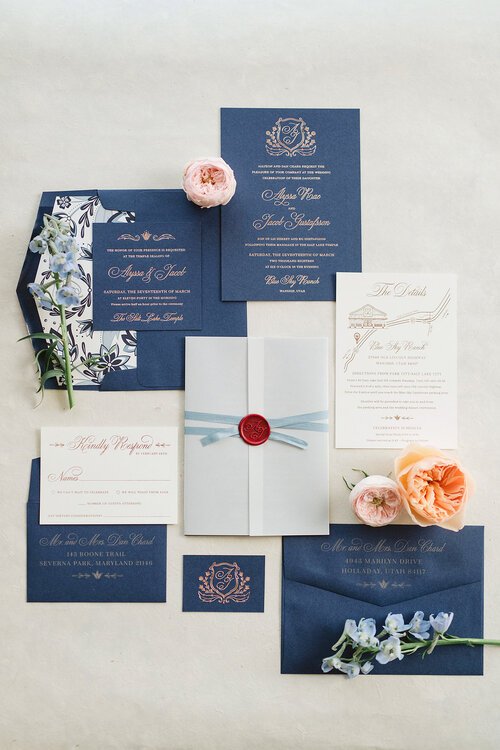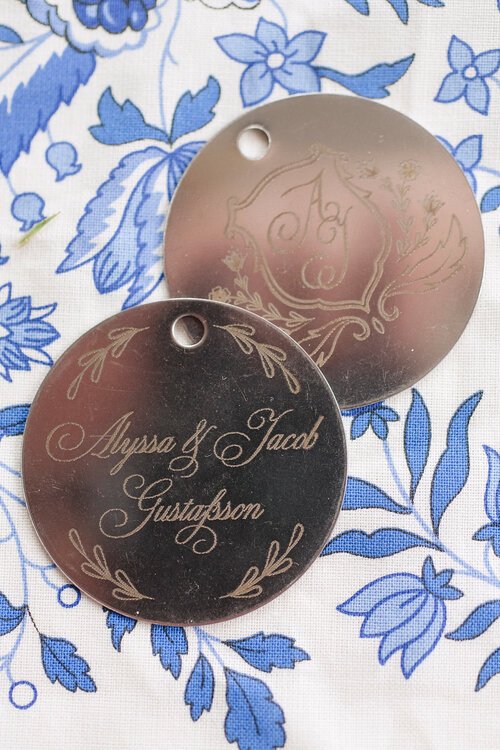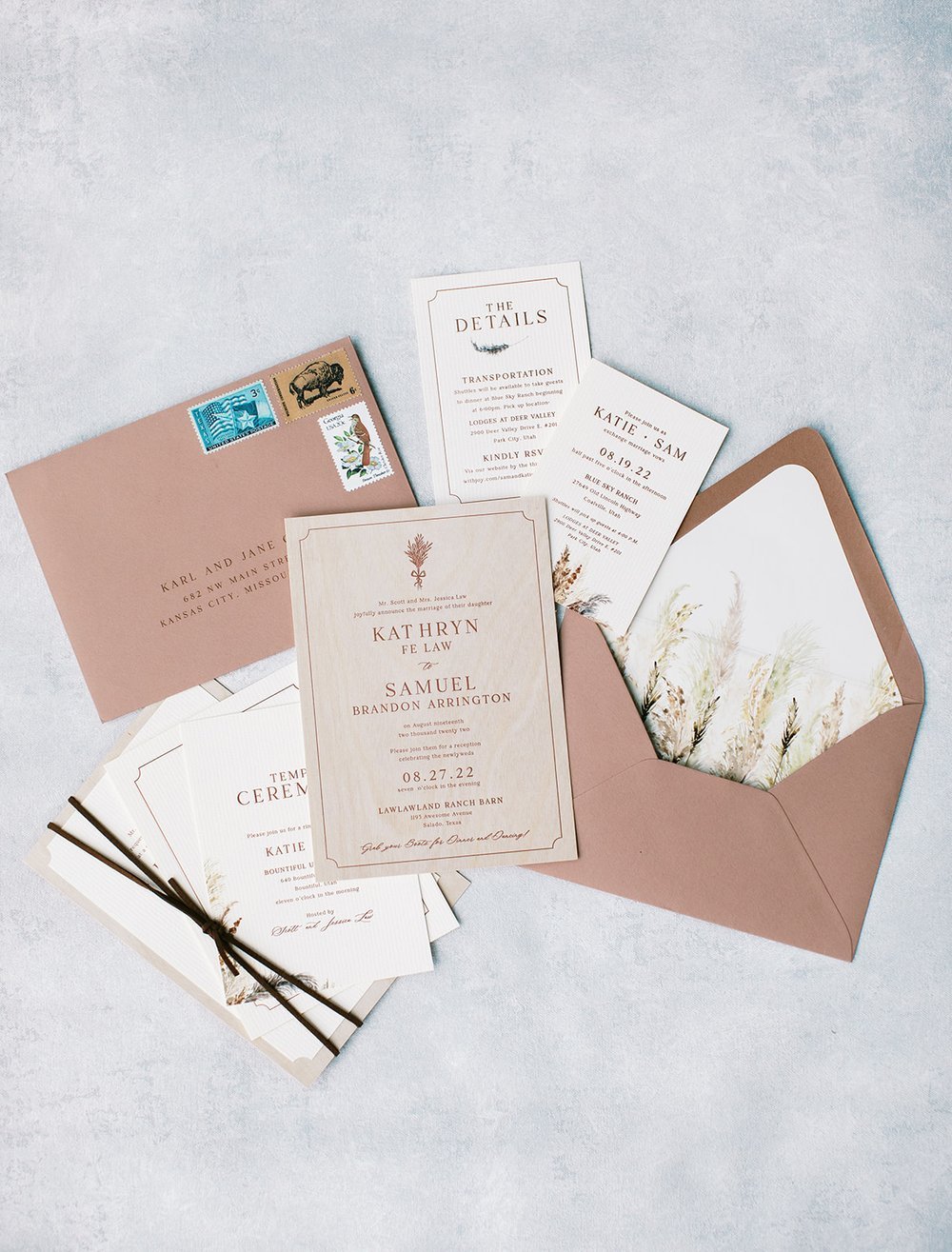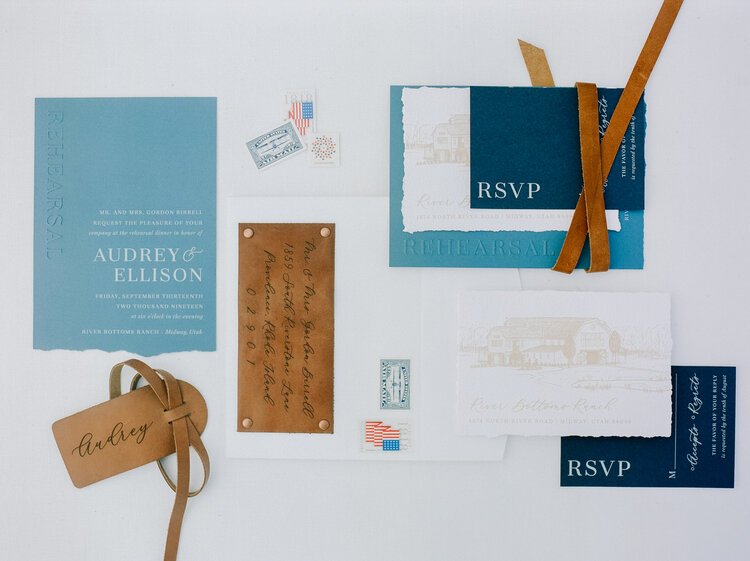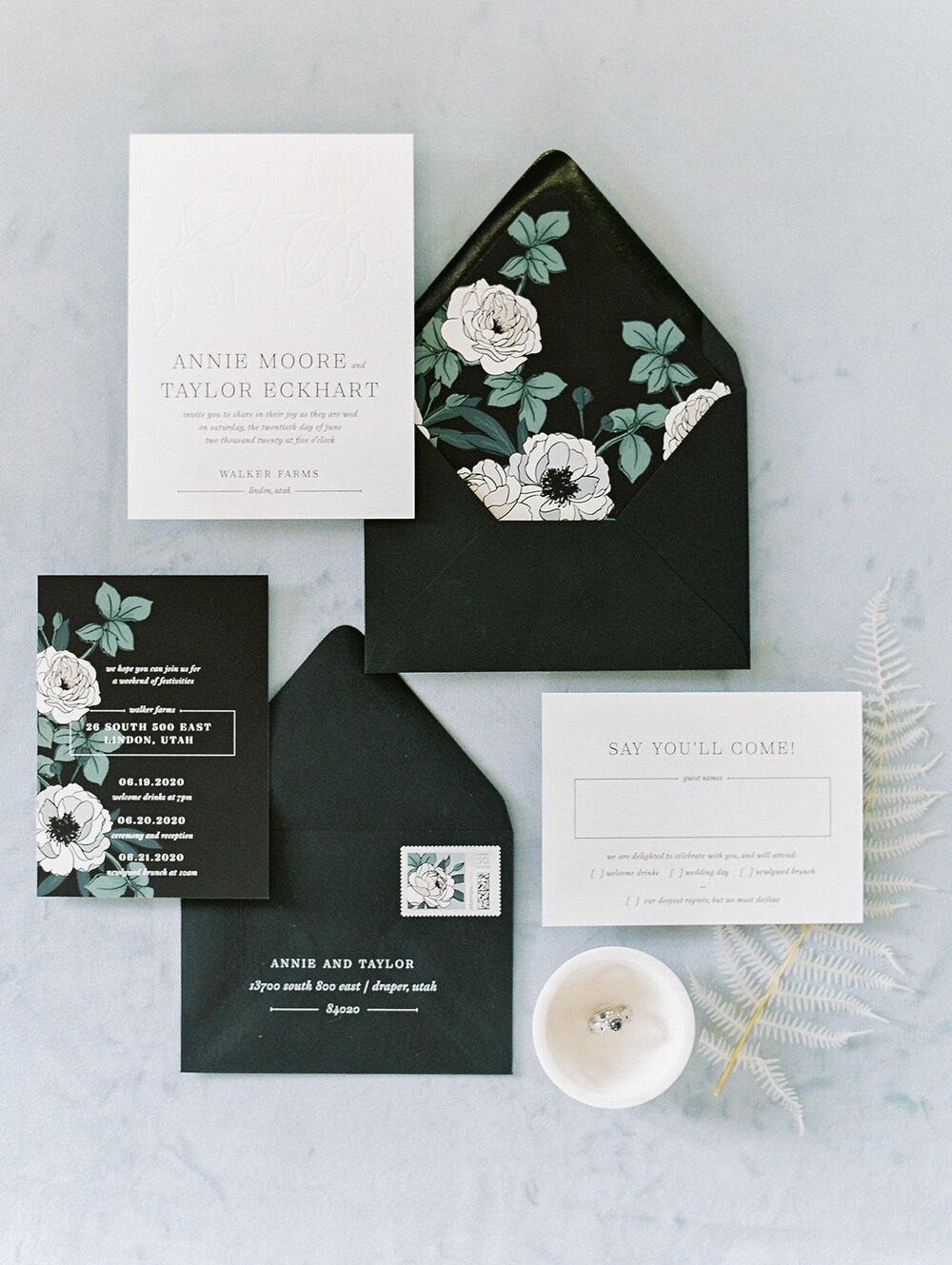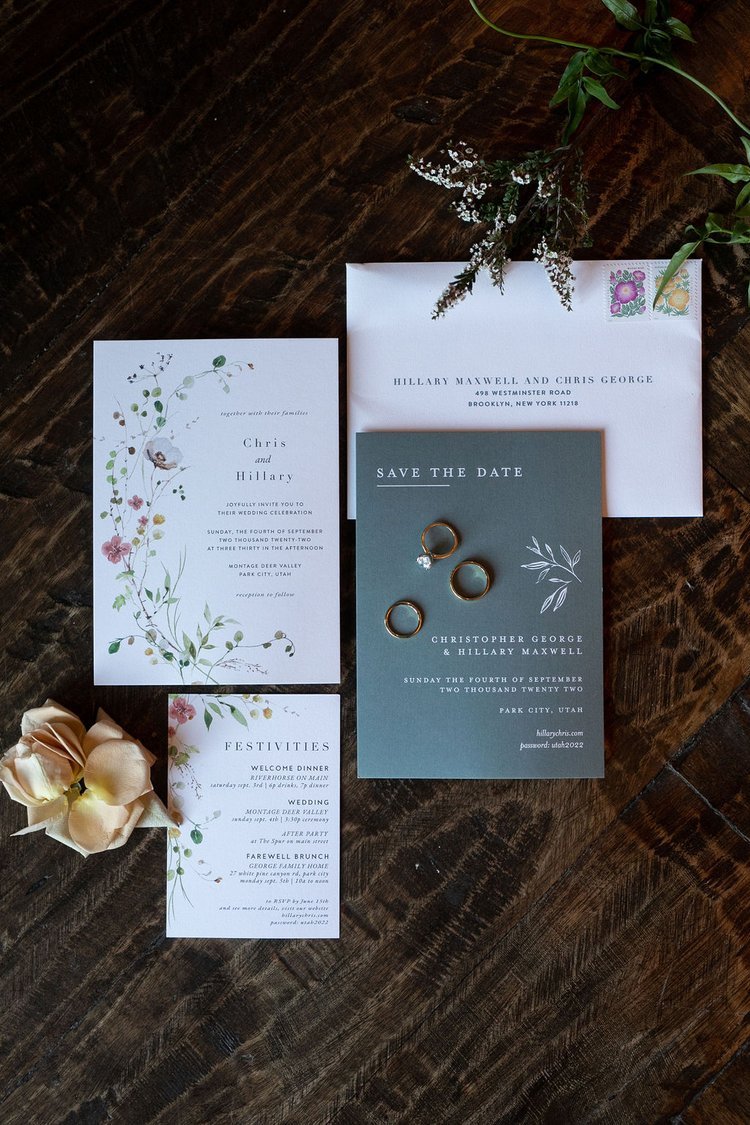Wedding Invitation Tips
How To Choose The Perfect Wedding Invitation
The wedding invitation is the first thing guests receive prior to an event, helping set expectations of what’s to come. Beyond communicating all the important details, an invitation suite sets the tone and creates the first impression.
Getting the look, feel and wording right takes time, especially when there are so many options to choose from. From digital printing options to letterpress, hand calligraphy, foil stamping, and more, it can be overwhelming and sometimes confusing, but it doesn’t have to be! Make the decision process easier by categorizing your priorities based on style and cost.
Think about the style of your event and the impression you want your invitations to give your guests. Do you need something more traditional and formal, eclectic and fun, or casual and no fuss? This helpful guide establishes what different printing methods cost to help you determine what’s going to work for your budget and your style.
DIGITAL PRINTING
Cost: $
What It Means: Text and designs are 2D or flat to the touch.
Process: Digital design is printed on a high-quality printer.
Paper Options: Thinner paper is available in this category. Thicker paper is also available, but may be duplexed (layers glued together) after printing is complete.
This invitation style is ideal for couples on a tight timeline or budget. Color possibilities are endless.
FOIL STAMPING
Cost: $$ - $$$
What It Means: A metallic shine that will pop off the paper. The stamping process involved will give your invitation a similar indentation to letterpress, but with the addition of the metallic finish.
Process: A sheet of metallic foil is pressed onto the paper using a heated and raised metal plate.
Paper Options: Thick and thin paper can be used in this category. Foil stamping also gives you the availability to print on black or dark-colored paper with a crystal clear impression
This invitation style is perfect for adding an eye-catching element to your invitations and looks best when used with thicker lines and fonts, which are easier for the plate to press onto the paper.
LETTERPRESS
Cost: $$ - $$$
What It Means: There is a soft indentation on the front and may be raised on the back (depending on the paper selection).
Process: Ink is applied to a custom made plate with raised letters and pressed onto the paper in a special machine.
Paper Options: Cotton based paper is best in this category as it will absorb ink better than wood-based paper. Thinner paper will show an indentation on the back, while thicker paper will not.
This invitation style is one of the most popular options for wedding stationery. It’s timeless and elegant and can be done with or without ink.
ENGRAVING
Cost: $$$$
What It Means: Text and designs are raised and have a slight indentation on the back.
Process: Everything is etched onto a copper plate, coated in ink, and pressed onto the paper, creating the raised feel on the front and the slight indentation on the back.
Paper Options: This look is achieved with thick paper, as thin paper would not be able to hold up throughout this process.
This invitation style is one of the most expensive forms of printing and is typically reserved for ultra-formal weddings and events (like the Royal wedding).
Other printing methods to consider -
OFFSET PRINTING (LITHOGRAPHY)
Cost: $
What It Means: Text and designs are 2D or flat to the touch. Colors can be matched to a very specific Pantone color and use a naturally thicker paper. You may be limited in the color palette, as four-color offset (similar to digital) is typically only used for large production runs.
Process: Ink is applied to large rollers that press the ink onto the paper through specially made plates.
Paper Options: Thick and thin paper can be used in this category.
This invitation style is the best option for invites that use vibrant colors and multiple colors or images. Looking for a custom watercolor on your invitation? This is what you’ll likely need.
THERMOGRAPHY
Cost: $$
What It Means: There is a slight shine to the ink and the look and feel is similar to engraving, but without the indentation on the back.
Process: Printed using a slow drying ink. Powder resin is placed on top of the ink and heat is applied. The text and designs will feel raised to the touch.
Paper Options: Cotton fiber paper is usually best with this category, but other options are available.
Important things to consider -
“Going with an expensive printing method doesn’t necessarily mean it will be the best invitation you can possibly have. Consider other details that can really create an experience with your invitation, whether it’s a vellum wrap or wax seal, there are tons of possibilities for making something super personal and memorable. Keep in mind you can also mix printing methods together, like a digital print with a foil-stamped accent for a cheaper investment.”
-Kacey, Twelve30 Creative
Now that you’ve had a crash course on printing methods and associated costs, we hope you’re feeling ready to dive into your invitation design process. Be sure to select a professional who can answer your questions and help make decisions that work for your style, budget, and timeline.
Need some additional help with wording your invitation? Check out THIS POST for some helpful examples.


